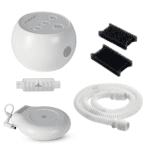Mattress warranties are an important customer service policy that add value to your mattress purchase. A good warranty protects you from low-quality materials and shoddy construction.
It’s good to understand what’s covered under your bed’s warranty in case you have an issue. However, most mattress companies use technical and confusing legal language when writing their warranty policies.
If you’re not a lawyer or legal expert, we’ll help you cut through the jargon. We’ll cover the nuts and bolts of mattress warranties, the different types of warranty policies, and what most warranties cover. We’ll also walk you through the claims process in case something goes wrong with your mattress.
Let Us Help You Find the Perfect Bed
Answer a few questions to find the right mattress for your unique needs
What Is a Mattress Warranty?
A mattress warranty is a customer service policy that protects you in case your mattress is defective. Nearly all mattress manufacturers offer a warranty that covers defective materials or workmanship.
For expensive items like a mattress, a warranty guarantees that your investment is protected if something goes wrong. But keep in mind that warranties usually don’t cover accidents such as spills or improper use like forgoing a mattress foundation.
What Are the Terms?
The terms are the technical details of your mattress warranty. These details define exactly what the company covers for which models. The terms typically include the warranty length, coverage specifics, and actions that can void the warranty.
Length
The main detail that mattress brands advertise is their warranty length. Mattress warranties can vary from company to company and even model to model within the same brand. Warranty length is usually in years such as 10 years or 20 years. You may also encounter mattress brands that offer lifetime warranties.
Coverage
The coverage outlines the types of damages that qualify for replacement, repair, or reimbursement. Most mattress warranties limit coverage to defects in the materials or construction.
Commonly covered defects include broken spring coils, bad stitching, busted zippers, or materials that significantly sag. However, mattress manufacturers don’t usually cover deterioration from normal wear and tear.
Voidance
A voided warranty is no longer valid in the eyes of the mattress manufacturer. Certain actions can void your warranty, resulting in denied warranty claims. These include:
- Failing to regularly flip or rotate your mattress
- Improper support
- Significant spills
- Selling the mattress
Buying From Third-Party Retailers
The company at the point of purchase is responsible for upholding and honoring a mattress warranty. When you buy directly from the manufacturer, you know you’re getting their warranty. But that may not be the case when you buy from a third-party retailer.
Third-party retailers like Amazon don’t always offer a warranty. Before you make your purchase, do your research. Understand the warranty terms from each retailer you’re considering. Often, it’s easier and safer to purchase a mattress directly from the manufacturer.
Warranty vs. Sleep Trial
Many shoppers confuse mattress warranties with sleep trials, but these are two distinct policies. A sleep trial allows you to try out a mattress in the comfort of your own home for a set time period. During the sleep trial, you can return the mattress, often for free, if you’re not satisfied.
A sleep trial is more akin to a return policy and covers the first days or weeks of your new bed’s lifespan. In contrast, a warranty protects against damages and defects and covers your mattress for the long term. Moreover, not all mattress manufacturers offer sleep trials.
What Are the Different Types of Warranties?
The three main types of mattress warranties are prorated, non-prorated, and combination. Not all mattress warranties are created equal. The different types of warranties offer different levels of coverage, usually based on the age of your mattress.
No matter what type of warranty covers your mattress, it’s important to hang on to a copy, either printed or digital. This can help you understand the manufacturer’s responsibility in case you need to file a claim.
Prorated
A prorated mattress warranty only covers a portion of the cost of replacement, repair, or reimbursement. Additionally, the proportion of coverage decreases over time. This means that the older your mattress gets, the less the warranty covers.
Non-Prorated
Non-prorated warranties cover replacement, repair, or reimbursement equal to the original purchase price of your mattress. The level of coverage stays the same for the entire length of the warranty. However, customers may still be responsible for other costs such as shipping fees.
Combination
Many mattress warranties offer a hybrid between a prorated policy and a non-prorated policy. For example, a combination warranty may be non-prorated for an initial period after purchase such as the first year. After the initial period, the policy switches to prorated and coverage decreases for the rest of the warranty.
What Does a Mattress Warranty Cover?
Every mattress warranty is a bit different, but most cover manufacturing issues with the bed’s construction and materials. Construction defects can include broken innerspring coils, split foam, ripped seams, or damaged fabric. Warranties may cover other components included in your purchase such as a box spring.
Many mattress warranties also cover significant or premature sagging. This can be a sign of improper construction. However, the warranty usually requires specific measurements. For example, you may need to demonstrate that your mattress sags more than one and half inches to receive coverage.
What Does It Not Cover?
Mattress warranties usually don’t cover damage or breakdown associated with normal wear and tear. In general, any damage the owner causes is not covered. This can include moderate mattress sagging from normal use.
It’s good practice to keep your mattress clean and protect it from spills. But it’s normal for mattresses to become slightly discolored over time. Mattress warranties don’t cover stains, spills, or discoloration from regular use.
Mattress warranties also don’t extend to comfort issues. You may be able to receive a refund or exchange as part of the bed’s sleep trial, but warranties don’t cover the sleeper’s comfort preferences.
What Voids a Mattress Warranty?
There are several actions that can void your warranty policy before the warranty period is over. The most common is change of ownership. This can include selling or gifting your mattress to a new owner. Most mattress warranties only apply to the original buyer.
Improper care may also void your warranty. This includes failing to use proper support with the right type of foundation. Evidence of significant spills or water damage can also void your mattress warranty.
Lastly, some warranties prohibit the removal of the law tag. The law tag is a large label that warns, “Do not remove this tag under penalty of law.” While you won’t get arrested or fined for removing this tag, it acts as a proof of purchase and removal can void your warranty.
Filing a Warranty Claim on Your Mattress
Now that you have a better understanding of your mattress warranty, we’ll help guide you through the claim process.
Read Your Warranty
The first step is to carefully review the terms of your mattress warranty. If you didn’t save a copy of your warranty, manufacturers usually post the full terms online.
Check to see if the warranty covers your issue. You can also see what costs you might be responsible for during the claims process, such as shipping or prorated expenses.
Document the Issue
After checking the terms, the next step is to document your issue. Take detailed photos of the affected area. Measurements can also be useful to show the extent of defects such as stitching issues or indentations. The mattress manufacturer may not require pictures, but they can be very helpful for making your case.
Contact the Manufacturer
To file a claim, contact the mattress manufacturer. Most companies have a customer service department that you can reach via email, phone, or mail.
Every company is a bit different and a customer service representative can walk you through their specific process for handling warranty claims. If you’re mailing any warranty forms or other documentation, consider using certified mail with a return receipt.
Check in and Follow Up
After submitting your warranty claim with the manufacturer, it’s best to check in frequently. Checking in helps you stay updated and ensures your claim doesn’t fall through the cracks.
Most manufacturers complete their review process in a timely manner. If they don’t, you can contact the Federal Trade Commission for assistance.
Final Steps
In certain cases, the manufacturer may want to have an inspector check the mattress or send out a specialist to perform a repair. You may also be responsible for additional charges or shipping costs before the manufacturer can move forward. Make sure to follow up and complete any final steps to finish the claims process.
Ask the Sleep Doctor
Have questions about sleep? Submit them here! We use your questions to help us decide topics for articles, videos, and newsletters. We try to answer as many questions as possible. You can also send us an email. Please note, we cannot provide specific medical advice, and always recommend you contact your doctor for any medical matters.










































